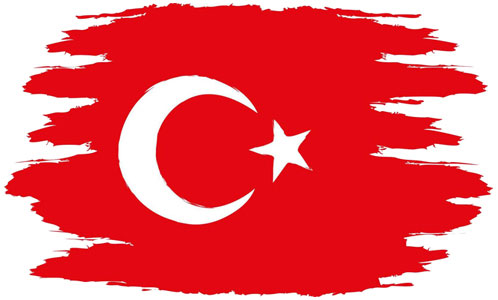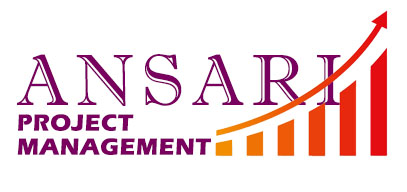Introduction
Iran is a diverse nation, with numerous ethnicities, languages, and cultures. One of the significant provinces in Iran is East Azerbaijan, located in the northwest of the country, with Tabriz city as its capital. The province has
a significant historical background, from the Achaemenid Empire to the modern era. The region is surrounded by major mountain ranges, including the Sabalan, Talesh, and Bozqoosh Mountains. Its proximity to Turkey and Armenia makes it a strategic location for import and export, thereby contributing to the region's economy.
The purpose of this essay is to explore and analyze the different aspects of East Azerbaijan, including its cultural, literature, art, social, economy, geographical, and historical relationships. The essay will also discuss the
importance and role of these aspects in the present-day and Iran's contemporary progress toward sustainable development.
Geography
East Azerbaijan is one of Iran's thirty-one provinces, located in the northwest of the country. The province borders West Azerbaijan to the west, Ardabil to the north, Zanjan to the east, and Kurdistan and Hamadan to the south. With an area of 47,830 square kilometers, East Azerbaijan is the sixth-largest province in Iran.
East Azerbaijan's capital is Tabriz city, one of the most populous cities in Iran. It is situated at an altitude of 1,350 meters above sea level, surrounded by mountains on all sides. The Sabalan Mountain, which is Iran's third-highest peak, is located in the province's northwest. The region's climate is subtropical, with mild spring and
autumn seasons and cold winters. The largest lakes in Iran, including Lake Urmia, Shorabil, and Neor, are in East Azerbaijan province, making the region an important tourism hub in the country.
History
East Azerbaijan has a rich history that dates back to the Achaemenid period (550-330 BC). The province was one of the four provinces that made up the Achaemenid Empire, which was followed by several other empires that ruled over Iran, including the Parthian, Sassanian, and Seljuk empires. The province was a significant part of the Silk Road, which
was a network of trade routes that connected China, India, Persia, and the Mediterranean.
Tabriz during the era of the Safavid Empire (1501-1736) was the site of numerous historical events that shaped the country's future. In the early 20th century, Tabriz played a crucial role in the Iranian Constitutional Revolution (1905–1911).

East Azerbaijan is home to several ethnic groups
Culture
East Azerbaijan is home to several ethnic groups, including Azerbaijani Turks, Kurds, Talysh, and Persians. Azerbaijani Turks are the most populous ethnic group, making up approximately 98 percent of the province's population. The Azerbaijani language is the province's primary language and is used for communication and official purposes.
The province's culture is heavily influenced by Azerbaijani traditions, such as music, dance, and cuisine. Azerbaijani music is known for its traditional instruments, such as the tar, kamancha, and oud. Azerbaijani dance, such as the Azerbaijani terekeme, is performed at weddings and other celebrations. Azerbaijani cuisine is characterized by spicy foods, such as kebab, plov, and dolma.
Literature
The province has a rich literary history, with several famous poets and writers who originated from the region. Shahriyar, one of Iran's most famous poets, was born in Tabriz city. His poetry often depicts the beauty of nature and love.
Art
East Azerbaijan is known for its handicrafts, including carpet weaving, textile production, and pottery. The region's carpet weaving is characterized by intricate designs and patterns, with the Tabriz rug being
the most famous. The province is also known for its textile production, with the Ahar and Tabriz regions producing woolen and silk fabrics. East Azerbaijan's pottery and ceramic production are also famous, with the province's blue pottery being highly coveted.
Social
East Azerbaijan's social structure is heavily influenced by Islamic traditions, with religion playing a crucial role in everyday life.
The province's society is known for its conservatism, with strict adherence to Islamic customs and values.

East Azerbaijan is one of Iran's leading provinces in terms of economic activities
Economy
East Azerbaijan is one of Iran's leading provinces in terms of economic activities. The province's economy is driven by manufacturing, agriculture, and tourism. The region's manufacturing sector is dominated by the steel and metal industries, with a significant number of factories located in Tabriz city. The province's agriculture sector produces crops such as wheat, barley, and fruits. The region's
major tourist attractions include Lake Urmia, Tabriz Historic Bazaar Complex, and the St. Stepanos Monastery.
The province's strategic location near Turkey and Armenia has made it an essential transportation hub, with many roads and railways passing through the region. The province's borders with Azerbaijan and Nakhchivan have also increased the province's significance regarding trade and commerce.
Nowadays, the Iranian government is investing significantly in the East Azerbaijan region to promote sustainable development. The region's natural resources, including fertile soil, mineral deposits, and water resources, can be used to create employment opportunities and boost the local economy. The promotion of sustainable development in East Azerbaijan province is aimed at meeting the needs of the present without compromising the ability of future generations to meet their own needs.
Competitive Advantages
East Azerbaijan's competitive advantages lie in its natural resources, strategic location, and rich cultural heritage. The region's natural resources, including fertile soil, water resources, and mineral deposits, can be used to establish
a robust agricultural and industrial sector. The province's proximity to Turkey and Armenia makes it an essential transportation hub, facilitating trade and commerce with the neighboring countries.
The region's rich cultural heritage and historical significance make it a valuable tourism hub. The promotion of tourism in the region can help generate revenue and create employment opportunities. The province's traditional handicrafts, such as carpet weaving and pottery, are loved by tourists worldwide, and the Iranian government should focus on promoting them.
Conclusion
East Azerbaijan is one of Iran's significant provinces, with a rich cultural and historical heritage. From its strategic location to its natural resources, the region has numerous competitive advantages that the government can leverage to promote sustainable development. The province's natural resources, including fertile soil, water resources, and mineral deposits, can be used to establish a robust agricultural and industrial sector. The region's
rich cultural heritage and historical significance make it a valuable tourism hub. Overall, East Azerbaijan's importance in the context of great Iran civilization and the region's potential for sustainable development makes it a province worth noticing and studying.
Dear Visitor; Please take a look at the list of 50 most visited websites in the world wide web: YouTube, Facebook, google, translate, gmail, weather, amazon, Instagram, cricbuzz, Hotmail, wordle, satta king, twitter, yahoo, yandex, sarkari result, Netflix, google maps, yahoo mail, roblox, whatsapp, NBA, BBC news, outlook, pinterest, flipkart, eBay, omegle, live score, tiktok, canva, ipl, premier league, hava durumu, ibomma, walmart, twitch, ikea, shein, linkedin, home depot, e devlet, lottery, snaptik, cricket, serie a, nfl, spotify, fox news, amazon prime; There is no book publishing related or project management website in this list. We are working hard to bring these important issues to the center of concentration of societies. Please introduce us via social media, share our website with others and help us to make our world a better place to live. Best Regards.













Write your review